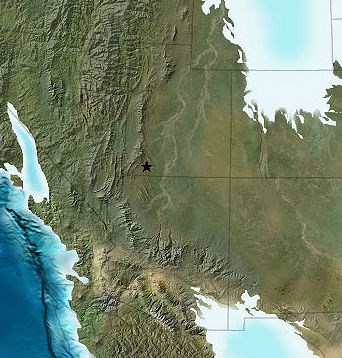|
Early Cretaceous
~120 million years ago

NPS photo / Alex Cohen On the very top of Horse Ranch Mountain, the highest point in Zion National Park, there is a small outcrop of a brown pebbly conglomerate. In the past these rocks were believed to be part of the Dakota Formation, and may appear in older publications as such. However, recent geological mapping by the Utah Geological Survey has determined that this rock actually belongs to the Cedar Mountain Formation, which is exposed more broadly east of the park.

Paleogeographic map courtesy of Ron Blakey, Colorado Plateau Geosystems, Inc. All of the sedimentary layers younger than the Cedar Mountain Formation have been eroded from Zion, but most may still be found in areas east and north of the park, where erosion has not yet cut so deeply through the sedimentary sequence. Millions of years ago, there were many thousands of feet of additional rock layers on top of what we see today—a impressive reminder of the powerful forces of erosion at work in the Colorado Plateau.
Return to the main Rock Layers page
|
Last updated: September 26, 2024
